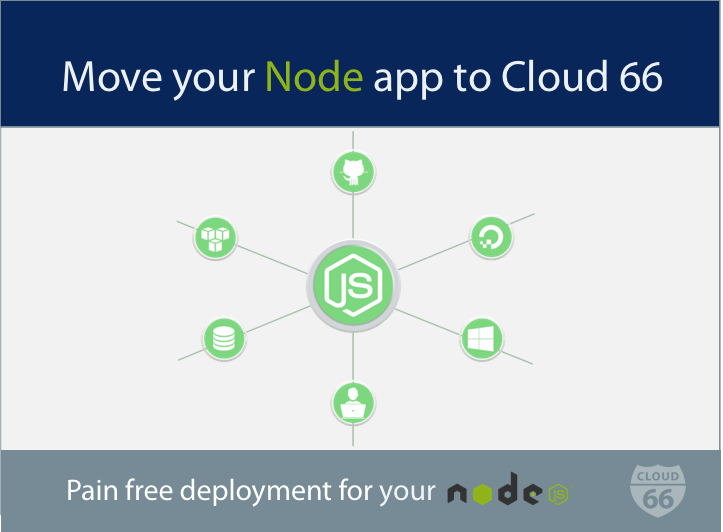
Following our recent announcement of Cloud 66 for Node we have received questions from users asking about the support on moving their Node application to Cloud 66.
For those not familiar, Cloud 66 specializes in DevOps-as-a-Service for Rails, Docker and now also Node. We offer a powerful end-to-end stack management for your apps on your own servers or any cloud provider, by giving you full control of the underlying infrastructure and the convenience of managed infrastructure.
Why Cloud 66 for Node?
Node developers have lacked a reliable deployment solution, that would allow them to deploy a node stack in production with the minimum maintenance. Here at Cloud 66 we took everything you love about our Rails and Docker products and made it accessible to developers looking for a solid Node deployment experience.
Any developer or system administrator can use Cloud 66 for Node to automatically deploy node app to the cloud by creating and setting up new servers.
We provide the support for all the popular node frameworks. It's easy to scale and at the click of a button you can increase your backend Node application servers, add a load balancer to distribute traffic or a database backup for guaranteed availability.
Moving your Node app to Cloud 66
Migrating your application to Cloud 66 involves three simple steps;
- deploying your code,
- importing your data,
- redirecting your traffic to the new endpoint.
Let's follow this simple step-by-step guide to complete your migration.
Step 1 - Code
Sign up for a Cloud 66 account and select Build a Node Stack from the dashboard. This will ask you for your Git URL, the branch you wish to deploy, your new stack name and the environment to deploy.
Note: For private Git repository add the SSH key provided to your Git account and use the SSH version of the Git URL.
Cloud 66 will then analyze your code to determine what dependencies you have and which node framework you are using. If you want to know more about how Cloud 66 analyze your code, check out the details about analyzing Node applications in our help documentation.
Once that's done, add the API keys for a cloud provider of your choice to create your servers. You can specify the region and the size of the server or use our Registered Servers feature to add your own server.
Step 2 Data
You can easily set up your database from Cloud 66 dashboard during the on-boarding process. We support the following database, with no need for additional configuration after deployment.
- MySQL,
- PostgreSQL,
- MongoDB
- Redis
- ElasticSearch,
- MemcacheD
- RabbitMQ
- GlusterFS as a native solution
You can add and install your own components on the servers.
Step 3 Traffic
In order to switch your traffic to the newly created Cloud 66 stack, access your DNS provider settings and update the CNAME records pointing at the new server.
Have a look at our help page: Configure your DNS.
Now sit back, while Cloud 66 creates the required servers in your cloud account, configure them from scratch by updating packages, securing your firewall, installing Nginx and more. We'll notify you with an email once everything is complete and your application is running on the servers on your own cloud.
If you need more capacity, Cloud 66 for Node makes it a breeze to scale. Add more servers and spinning up more running Node instances.
Thanks for choosing Cloud 66!
- Customer Case Study: Find out how 'Briefly' moved from Modulus to Cloud 66.
- Customer Case Study: Read how Techstars migrated from Heroku to Cloud66.
- _Cloud 66 Help Page: Build, deploy and scale your Node stack.
